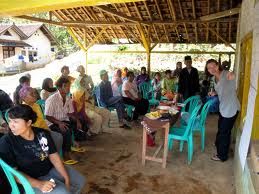Throughout this topic series, we will introduce knowledge streams and digital tools that can help you present information in engaging and meaningful ways. The Timeline JS tool used to create the Stop-and-Frisk timeline is one of these tools.
Timelines allow you to craft a narrative for your audience, gather a wide range of information, and provide a platform that is clean, clear, and interactive. Whether designing a class project, curating data and resources for an academic article, or presenting a history of your community group, timelines naturally combine the visual and textual in an easy to follow format.
While digital tools change at a rapid rate, a current favorite timeline of mine is Timeline JS. Developed by Zach Wise as part of Northwestern University’s Knight Lab, the tool is simple to use and produces visually appealing, interactive timelines that are easily embedded on a website.
To get started, download the Google spreadsheet template. You can then pull in media directly from Wikipedia, Soundcloud, YouTube, GoogleMaps, Twitter, Flicker, and more. There are clear step-by-step instructions on on the Timeline JS website, including a video tutorial and an excellent Help section. We’ve also made some screencasts to get you started. The first walks you through the basics of creating a timeline, the second highlights some of the options available.
Timeline Basics
http://www.youtube.com/watch?v=DPJyolBkwQUWorking in the Template
http://www.youtube.com/watch?v=OEqfqqPlmuA
Top 3 Timeline Tips
1. Create a clear narrative. The strongest timelines are those that tell a clear narrative. Though presented in a visual form, timelines are much like any research paper or story: they work best when they have a good organizational structure and the order of the argument makes sense.
2. Incorporate a range of media. Images are only one way to ground your text. Charts, maps, documents, links to other sources, video, and infographics can give your project a more robust feel and provide your reader with further avenues to explore on the topic.
3. Cross-promote content. Timelines let you curate a broad range of information. If there are academics, journalists, activists, or community groups working on the subject, be sure to include links to their websites, tweets that are relevant to the topic, and events or research that they’ve done. Not only will this broaden the readership of your timeline, but it will direct people to important work being done in the field.
In the comments, please feel free to share links to your own timeline projects.
This post is part of the Monthly Social Justice Topic Series on Stop-And-Frisk. If you have any questions, research that you would like to share related to Stop-and-Frisk or are interested in being interviewed for the series, please contact Morgane Richardson at justpublics365@gmail.com with the subject line, “Stop-and-Frisk Series.”



